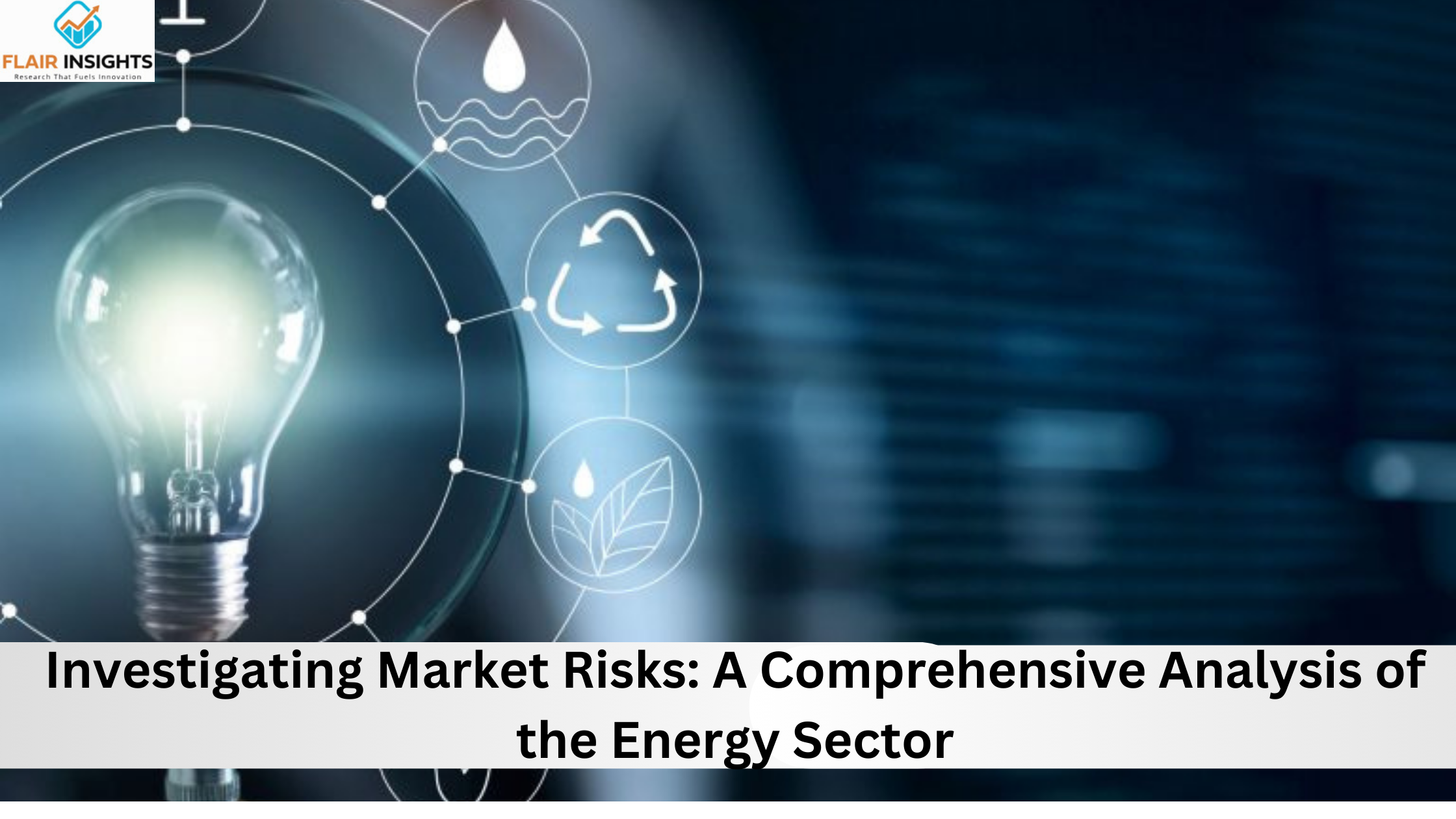
Market risks are part and parcel of every sector, and energy is no exception. The paper closely looks at market risks in the energy sector. From geopolitical factors to regulatory challenges, getting proper insights into these types of risks and how they play their roles will take more than ordinary intelligence to help stakeholders in these sectors to navigate this complex, dynamic landscape.
1. Overview of Energy Market Risks
1.1 Defining Market Risks in Energy
Before delving into specific risk factors, a clear understanding of what market risks in the energy sector mean has to be made. It can comprise a wide range of factors related to the economic situation, political events in countries, or technological shifts that may impact the stability and profitability of the industry.
1.2 Significance of Analyzing Market Risks
The precondition for any meaningful decision making regarding the energy sector is an analysis of the market risks. Stakeholders investors, policymakers, and industry players alike must develop a proper understanding of the potential challenges so as to embed measures aimed at mitigating these risks. The section will emphasize proactive risk management if the energy sector is to be resilient and sustainable.
2. Geopolitical Factors and Energy Market Risks
2.1 Global Supply Chain Vulnerabilities
This section looks at vulnerabilities associated with geopolitical conflicts and their potentials to disrupt the production and distribution of energy resources. Geopolitical factors, such as tensions between major energy producing nations, can significantly impact global supply.
2.2 Resource Nationalism
Another geopolitical risk is posed by resource nationalism, where countries assert control over their energy resources, thereby potentially leading to changes in regulations, taxation, or even nationalization, which of course has an effect on the operations and profitability of energy companies. The examined and recent examples of these are dealt with in this area.trends in resource nationalism provides insights into potential future challenges.
3. Regulatory Challenges in the Energy Sector
3.1 Evolving Environmental Regulations
With increasing orientation toward sustainability across the world, stringent environmental regulations are being framed for the energy sector. In line with this, the section reviews evolving regulation that is affecting traditional and renewable sources of energy, dealing with compliance challenges, and possible shifts in market dynamics.
3.2 Policy Uncertainty and Investment Risks
The sector is very responsive to policy changes. Uncertainty in policies can come from the government itself, subsidies, incentives, or even broad energy policies it can then create risks to investment. This section of the analysis looks at how altered policies might influence investment decisions and the total stability of the energy market.
4. Technological Shifts and Innovation Risks
4.1 Emergence of Disruptive Technologies
The extremely fast rate at which technology is evolving presents opportunities and risks for the energy sector. This chapter considers the development of truly disruptive technologies from renewable energy innovations to energy storage solutions and how they could fundamentally alter market dynamics.s.
4.2 Cybersecurity Threats
The heightened share of digitization in the energy sector also means a heightening of cybersecurity threats. This section considers some critical vulnerabilities intrinsic to industry infrastructure and the potential impact of cyber-attacks on energy production, distribution, and general operational resilience.
5. Economic Factors Impacting Energy Markets
5.1 Volatility in Oil and Gas Prices
The oil and gas industry is prone to price volatility of these two commodities. This section reviews the drivers of price volatility and their consequences on the financial health of energy companies.
Oil gas price volatility has been a perennial risk factor in the energy sector. Prices get affected by a host of factors, from geopolitical tensions to supply demand dynamics and economic conditions. Companies that concentrate especially on fossil fuel like energies are prone to economic ripples due to the volatility in oil and gas prices. The paper analyzes historical trends of the market indicators and the exogenous factors that create price volatility, so to let the stakeholders be prepared for and navigate with varying degrees of success the financial risks associated with fluctuating energy prices.
5.2 Global Economic Uncertainty
It can also be affected by broader economic uncertainties at a global level, from recession to financial crisis. This section of the analysis surveys the links between the energy sector and global economic conditions and provides insight into potential risk in times of turmoil.
6. Social and Environmental Considerations
6.1 Social License to Operate
One of the critical issues concerning market risk in the energy sector has to do with the social license to operate. This section reviews how community perceptions, public opinion, and social expectations may influence the design of the regulatory environment and impact operational viability for energy projects.
6.2 Climate Change and Sustainability Pressures
Rising concerns about sustainability challenge traditional sources of energy. This section examines how firms that have invested heavily in non renewable energy could be exposed to market risk arising from climate change concerns and related sustainability pressures.
7. Mitigating Market Risks: Strategies and Best Practices
7.1 Diversification of Energy Portfolios
One of the strategies that could be implemented to alleviate market risk would be energy portfolio diversification. This section addresses how companies should mix their conventional and renewable resources to hedge their risks against the changing nature of the market.
7.2 Strategic Partnerships and Collaborations
At the same time, strategic partnerships and industry collaborations can help improve the ability to absorb risks. The next section of the analysis focuses on some successful cases of collaboration and how the sharing of resources and knowledge helped in risk mitigation.
7.3 Investment in Research and Development
One major way this might be possible is through staying ahead of changes with research and development. This section explores how the innovative companies are putting themselves in a position to assume market risks associated with new technologies.
Research and development can play an important role in how energy companies respond to technological shifts and competitive pressures. This section explores how companies are using R&D to identify emerging technologies, drive operational efficiencies, and develop creative solutions to meet market challenges. The case studies of those companies that have used R&D to traverse disruptions in the industry throw light on best practices to stay ahead of the curve.
8. Conclusion
In summary, the energy industry is a natural incubator of many market risks. Geopolitical tensions and technology innovations are only two big mountains to watch and surmount with proactive risk management strategies. Comprehension of how these complexities interlink empowers informed decisions that will secure energy industry sustainability over the long term within a dynamic global environment.
Geopolitical factors, regulatory changes, technological shifts, and economic fluctuations challenge risk mitigation and call for multidimensional efforts. Proactive risk management has become one of the major traits among companies better at keeping up with the moving landscape of uncertainties and prospering in the fast changing energy sector of today. Because market risks are assayed and adjusted to all the time, it is possible for the energy sector to contribute to a much more sustainable and resilient future.
Trending Posts

Global Silver Nanoparticles Market
The global silver nanoparticles market was valued at $2.08 billion in 2020, and is projected to reach $4.1 billion by 2027, growing at a CAGR of ~17%

The Basic Pension Comes - Federal Cabinet Decides On the Pension Supplement
Financial security in old age is an issue that is causing stomach pains for more and more people in Germany. Low-wage earners fear the elderly. The ba

The Future of Artificial Intelligence
In recent years, the field of artificial intelligence (AI) has witnessed unprecedented growth and transformative advancements. As AI technologies

"LNG Bunkering" Here is something you must know!
In the current scenario of growing pollution, companies are trying to adapt more and more sustainable approach that not only gives eco-friendly result

Sailing into the future with Autonomous Ships
Autonomous Vehicles (AVs) are the uproar of this era. After airways, thanks to the companies like Tesla, that people are now getting used to see drive

Rising Demand For Uninterrupted Power Supply Is Expected To Drive The Power Rental Market
Todays world is totally reliant on electric power. There are many things which are not manageable without electricity. Power rental is a concept where

Rapidly growing IT industry coupled with the trend of bringing your own device (BYOD) is expected to provide new opportunities for growth of Cloud Collaboration
Cloud collaboration is the process of sharing and co-authoring the computer-based work through cloud technology

Fact check on UV Disinfection for COVID-19
Many regulatory authorities and bodies believe that UV disinfection technologies can play a role in a multiple barrier approach to reducing the transm

Vaccination: Vaccination Against Measles is Now Mandatory in Germany
The subject of compulsory vaccination has always heated peoples minds and caused emotionally charged discussions. The latest law in this area - the ob

The Global Ventilator Market Grows at a CAGR of 7.75 %
The Global Ventilator Market, which was at $688 million in the year 2016, is about to double by the year 2025, and reach a value of $1,347 million. Th
Recent Posts

Gold at Historic Highs in 2025: Strategic Implications of a Flight to Safety
Gold has reached unprecedented valuation levels in 2025, crossing $3,175 per ounce globally and nearing ₹94,000 per 10 grams in India—a 23% increase year-to-date

The Escalating U.S.-China Trade War: Strategic Implications for the Global Economy in 2025
In 2025, the U.S.-China trade war has reached an inflection point, introducing heightened complexity and volatility into the global economic system.

Tariffs & Trade: Key Trends, Policies, and Market Impact
A tariff is a tax imposed by a government on imported or exported goods. It is primarily used to regulate international trade by either encouraging domestic production or generating revenue for the government.

The Global Buy Now Pay Later (BNPL) Market: Growth and Opportunities
The global Buy Now Pay Later (BNPL) market has emerged as a revolutionary financial solution, transforming how consumers approach shopping and payments. Offering flexibility and convenience, BNPL allows consumers to make purchases and pay.

Global Motorhome Market: Growth and Forecast
The motorhome market has gained significant momentum over the past decade, driven by rising interest in outdoor tourism, evolving consumer lifestyles, and advancements in vehicle design and technology. As a preferred option for travelers seeking.

The Global Poppy Seed Market: Growth and Trends
Poppy seeds, derived from the opium poppy plant (Papaver somniferum), have been a vital component in global culinary, pharmaceutical, and personal care industries for centuries. The global poppy seed market is gaining traction due to its versatility.

Global Plant Breeding and CRISPR Plants Market
The global food industry is facing immense pressure due to rising population levels, diminishing arable land, and the impact of climate change. Innovations in plant breeding, particularly the use of CRISPR technology, are reshaping the agricultural .

Global Pheromones Market – Trends, Opportunities, and Forecast
The global pheromones market has witnessed significant growth, primarily driven by the rising demand for eco-friendly pest control solutions in agriculture. Pheromones, natural chemicals emitted by insects and other organisms to communicate.

The Role of Technology in Oil and Gas Risk Management
In an industry as dynamic and complex as oil and gas, risk management is crucial for ensuring operational efficiency, regulatory compliance, and safety. Risk management software has become an indispensable tool for companies in this sector.

Global Smart Grid Sensors Market
The global energy landscape is undergoing a significant transformation, with smart grid technologies at the forefront. Smart grid sensors, a critical component of modern energy grids, enable efficient monitoring, energy distribution.
.png)